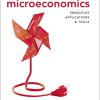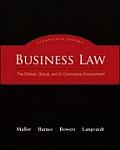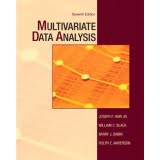Solution Manual for Design and Analysis of Experiments 10th Edition Douglas C. Montgomery
$55.00 Original price was: $55.00.$29.99Current price is: $29.99.
Solution Manual for Design and Analysis of Experiments, 10th Edition, Douglas C. Montgomery
Instant download Solution Manual for Design and Analysis of Experiments, 10th Edition, Douglas C. Montgomery pdf docx epub after payment.

Product details:
Design and Analysis of Experiments provides a rigorous introduction to product and process design improvement through quality and performance optimization. Clear demonstration of widely practiced techniques and procedures allows readers to master fundamental concepts, develop design and analysis skills, and use experimental models and results in real-world applications. Detailed coverage of factorial and fractional factorial design, response surface techniques, regression analysis, biochemistry and biotechnology, single factor experiments, and other critical topics offer highly-relevant guidance through the complexities of the field.
Stressing the importance of both conceptual knowledge and practical skills, this text adopts a balanced approach to theory and application. Extensive discussion of modern software tools integrate data from real-world studies, while examples illustrate the efficacy of designed experiments across industry lines, from service and transactional organizations to heavy industry and biotechnology. Broad in scope yet deep in detail, this text is both an essential student resource and an invaluable reference for professionals in engineering, science, manufacturing, statistics, and business management.
Table of contents:
1 Introduction 1
1.1 Strategy of Experimentation 1
1.2 Some Typical Applications of Experimental Design 7
1.3 Basic Principles 11
1.4 Guidelines for Designing Experiments 13
1.5 A Brief History of Statistical Design 19
1.6 Summary: Using Statistical Techniques in Experimentation 20
2 Simple Comparative Experiments 22
2.1 Introduction 22
2.2 Basic Statistical Concepts 23
2.3 Sampling and Sampling Distributions 27
2.4 Inferences About the Differences in Means, Randomized Designs 32
2.4.1 Hypothesis Testing 32
2.4.2 Confidence Intervals 38
2.4.3 Choice of Sample Size 39
2.4.4 The Case Where ?21 ≠ ?22 43
2.4.5 The Case Where ?21 and ?22 Are Known 45
2.4.6 Comparing a Single Mean to a Specified Value 46
2.4.7 Summary 47
2.5 Inferences About the Differences in Means, Paired Comparison Designs 47
2.5.1 The Paired Comparison Problem 47
2.5.2 Advantages of the Paired Comparison Design 50
2.6 Inferences About the Variances of Normal Distributions 52
3 Experiments with a Single Factor: The Analysis of Variance 55
3.1 An Example 55
3.2 The Analysis of Variance 58
3.3 Analysis of the Fixed Effects Model 59
3.3.1 Decomposition of the Total Sum of Squares 60
3.3.2 Statistical Analysis 62
3.3.3 Estimation of the Model Parameters 66
3.3.4 Unbalanced Data 68
3.4 Model Adequacy Checking 68
3.4.1 The Normality Assumption 69
3.4.2 Plot of Residuals in Time Sequence 71
3.4.3 Plot of Residuals Versus Fitted Values 71
3.4.4 Plots of Residuals Versus Other Variables 76
3.5 Practical Interpretation of Results 76
3.5.1 A Regression Model 77
3.5.2 Comparisons Among Treatment Means 78
3.5.3 Graphical Comparisons of Means 78
3.5.4 Contrasts 79
3.5.5 Orthogonal Contrasts 82
3.5.6 Scheffé’s Method for Comparing All Contrasts 83
3.5.7 Comparing Pairs of Treatment Means 85
3.5.8 Comparing Treatment Means with a Control 88
3.6 Sample Computer Output 89
3.7 Determining Sample Size 93
3.7.1 Operating Characteristic and Power Curves 93
3.7.2 Confidence Interval Estimation Method 94
3.8 Other Examples of Single-Factor Experiments 95
3.8.1 Chocolate and Cardiovascular Health 95
3.8.2 A Real Economy Application of a Designed Experiment 97
3.8.3 Discovering Dispersion Effects 99
3.9 The Random Effects Model 101
3.9.1 A Single Random Factor 101
3.9.2 Analysis of Variance for the Random Model 102
3.9.3 Estimating the Model Parameters 103
3.10 The Regression Approach to the Analysis of Variance 109
3.10.1 Least Squares Estimation of the Model Parameters 110
3.10.2 The General Regression Significance Test 111
3.11 Nonparametric Methods in the Analysis of Variance 113
3.11.1 The Kruskal–Wallis Test 113
3.11.2 General Comments on the Rank Transformation 114
4 Randomized Blocks, Latin Squares, and Related Designs 115
4.1 The Randomized Complete Block Design 115
4.1.1 Statistical Analysis of the RCBD 117
4.1.2 Model Adequacy Checking 125
4.1.3 Some Other Aspects of the Randomized Complete Block Design 125
4.1.4 Estimating Model Parameters and the General Regression Significance Test 130
4.2 The Latin Square Design 133
4.3 The Graeco-Latin Square Design 140
4.4 Balanced Incomplete Block Designs 142
4.4.1 Statistical Analysis of the BIBD 143
4.4.2 Least Squares Estimation of the Parameters 147
4.4.3 Recovery of Interblock Information in the BIBD 149
5 Introduction to Factorial Designs 152
5.1 Basic Definitions and Principles 152
5.2 The Advantage of Factorials 155
5.3 The Two-Factor Factorial Design 156
5.3.1 An Example 156
5.3.2 Statistical Analysis of the Fixed Effects Model 159
5.3.3 Model Adequacy Checking 164
5.3.4 Estimating the Model Parameters 167
5.3.5 Choice of Sample Size 169
5.3.6 The Assumption of No Interaction in a Two-Factor Model 170
5.3.7 One Observation per Cell 171
5.4 The General Factorial Design 174
5.5 Fitting Response Curves and Surfaces 179
5.6 Blocking in a Factorial Design 188
6 The 2k Factorial Design 194
6.1 Introduction 194
6.2 The 22 Design 195
6.3 The 23 Design 203
6.4 The General 2k Design 215
6.5 A Single Replicate of the 2k Design 218
6.6 Additional Examples of Unreplicated 2k Designs 231
6.7 2k Designs are Optimal Designs 243
6.8 The Addition of Center Points to the 2k Design 248
6.9 Why We Work with Coded Design Variables 253
7 Blocking and Confounding in the 2k Factorial Design 256
7.1 Introduction 256
7.2 Blocking a Replicated 2k Factorial Design 256
7.3 Confounding in the 2k Factorial Design 259
7.4 Confounding the 2k Factorial Design in Two Blocks 259
7.5 Another Illustration of Why Blocking is Important 267
7.6 Confounding the 2k Factorial Design in Four Blocks 268
7.7 Confounding the 2k Factorial Design in 2p Blocks 270
7.8 Partial Confounding 271
8 Two-Level Fractional Factorial Designs 274
8.1 Introduction 274
8.2 The One-Half Fraction of the 2k Design 275
8.2.1 Definitions and Basic Principles 275
8.2.2 Design Resolution 278
8.2.3 Construction and Analysis of the One-Half Fraction 278
8.3 The One-Quarter Fraction of the 2k Design 290
8.4 The General 2k−pFractional Factorial Design 297
8.4.1 Choosing a Design 297
8.4.2 Analysis of 2k−pFractional Factorials 300
8.4.3 Blocking Fractional Factorials 301
8.5 Alias Structures in Fractional Factorials and Other Designs 306
8.6 Resolution III Designs 308
8.6.1 Constructing Resolution III Designs 308
8.6.2 Fold Over of Resolution III Fractions to Separate Aliased Effects 310
8.6.3 Plackett–Burman Designs 313
8.7 Resolution IV and V Designs 322
8.7.1 Resolution IV Designs 322
8.7.2 Sequential Experimentation with Resolution IV Designs 323
8.7.3 Resolution V Designs 329
8.8 Supersaturated Designs 329
8.9 Summary 331
9 Additional Design and Analysis Topics for Factorial and Fractional Factorial Designs 332
9.1 The 3k Factorial Design 333
9.1.1 Notation and Motivation for the 3k Design 333
9.1.2 The 32 Design 334
9.1.3 The 33 Design 335
9.1.4 The General 3k Design 340
9.2 Confounding in the 3k Factorial Design 340
9.2.1 The 3k Factorial Design in Three Blocks 340
9.2.2 The 3k Factorial Design in Nine Blocks 343
9.2.3 The 3k Factorial Design in 3p Blocks 344
9.3 Fractional Replication of the 3k Factorial Design 345
9.3.1 The One-Third Fraction of the 3k Factorial Design 345
9.3.2 Other 3k−pFractional Factorial Designs 348
9.4 Factorials with Mixed Levels 349
9.4.1 Factors at Two and Three Levels 349
9.4.2 Factors at Two and Four Levels 351
9.5 Nonregular Fractional Factorial Designs 352
9.5.1 Nonregular Fractional Factorial Designs for 6, 7, and 8 Factors in 16 Runs 354
9.5.2 Nonregular Fractional Factorial Designs for 9 Through 14 Factors in 16 Runs 362
9.5.3 Analysis of Nonregular Fractional Factorial Designs 368
9.6 Constructing Factorial and Fractional Factorial Designs Using an Optimal Design Tool 369
9.6.1 Design Optimality Criterion 370
9.6.2 Examples of Optimal Designs 370
9.6.3 Extensions of the Optimal Design Approach 378
10 Fitting Regression Models 382
10.1 Introduction 382
10.2 Linear Regression Models 383
10.3 Estimation of the Parameters in Linear Regression Models 384
10.4 Hypothesis Testing in Multiple Regression 395
10.4.1 Test for Significance of Regression 395
10.4.2 Tests on Individual Regression Coefficients and Groups of Coefficients 397
10.5 Confidence Intervals in Multiple Regression 399
10.5.1 Confidence Intervals on the Individual Regression Coefficients 400
10.5.2 Confidence Interval on the Mean Response 400
10.6 Prediction of New Response Observations 401
10.7 Regression Model Diagnostics 402
10.7.1 Scaled Residuals and PRESS 402
10.7.2 Influence Diagnostics 405
10.8 Testing for Lack of Fit 405
11 Response Surface Methods and Designs 408
11.1 Introduction to Response Surface Methodology 408
11.2 The Method of Steepest Ascent 411
11.3 Analysis of a Second-Order Response Surface 416
11.3.1 Location of the Stationary Point 416
11.3.2 Characterizing the Response Surface 418
11.3.3 Ridge Systems 424
11.3.4 Multiple Responses 425
11.4 Experimental Designs for Fitting Response Surfaces 430
11.4.1 Designs for Fitting the First-Order Model 430
11.4.2 Designs for Fitting the Second-Order Model 430
11.4.3 Blocking in Response Surface Designs 437
11.4.4 Optimal Designs for Response Surfaces 440
11.5 Experiments with Computer Models 454
11.6 Mixture Experiments 461
11.7 Evolutionary Operation 472
12 Robust Parameter Design and Process Robustness Studies 477
12.1 Introduction 477
12.2 Crossed Array Designs 479
12.3 Analysis of the Crossed Array Design 481
12.4 Combined Array Designs and the Response Model Approach 484
12.5 Choice of Designs 490
13 Experiments with Random Factors 493
13.1 Random Effects Models 493
13.2 The Two-Factor Factorial with Random Factors 494
13.3 The Two-Factor Mixed Model 500
13.4 Rules for Expected Mean Squares 505
13.5 Approximate F-Tests 508
13.6 Some Additional Topics on Estimation of Variance Components 512
13.6.1 Approximate Confidence Intervals on Variance Components 512
13.6.2 The Modified Large-Sample Method 516
14 Nested and Split-Plot Designs 518
14.1 The Two-Stage Nested Design 518
14.1.1 Statistical Analysis 519
14.1.2 Diagnostic Checking 524
14.1.3 Variance Components 526
14.1.4 Staggered Nested Designs 526
14.2 The General m-Stage Nested Design 528
14.3 Designs with Both Nested and Factorial Factors 530
14.4 The Split-Plot Design 534
14.5 Other Variations of the Split-Plot Design 540
14.5.1 Split-Plot Designs with More Than Two Factors 540
14.5.2 The Split-Split-Plot Design 545
14.5.3 The Strip-Split-Plot Design 549
15 Other Design and Analysis Topics (Available in e-text for students) W-1
Problems P-1
Appendix A-1
Table I. Cumulative Standard Normal Distribution A-2
Table II. Percentage Points of the t Distribution A-4
Table III. Percentage Points of the ? 2 Distribution A-5
Table IV. Percentage Points of the F Distribution A-6
Table V. Percentage Points of the Studentized Range Statistic A-11
Table VI. Critical Values for Dunnett’s Test for Comparing Treatments with a Control A-13
Table VII. Coefficients of Orthogonal Polynomials A-15
Table VIII. Alias Relationships for 2k−pFractional Factorial Designs with k ≤ 15 and n ≤ 64 A-16
OC Bibliography (Available in e-text for students) B-1
Index I-1
People also search:
Design and Analysis of Experiments, 10th Edition
Design and Analysis of Experiments, 10th Edition pdf
Design and Analysis of Experiments
design and analysis of agricultural experiments
design and analysis of animal experiments
the design and statistical analysis of animal experiments pdf
Related products
Solution Manual
Solution Manual for Data Structures and Other Objects Using C++, 4/E Michael Main, Walter Savitch
Solution Manual
Solution Manual
Solution Manual
Solution Manual
Solution Manual











